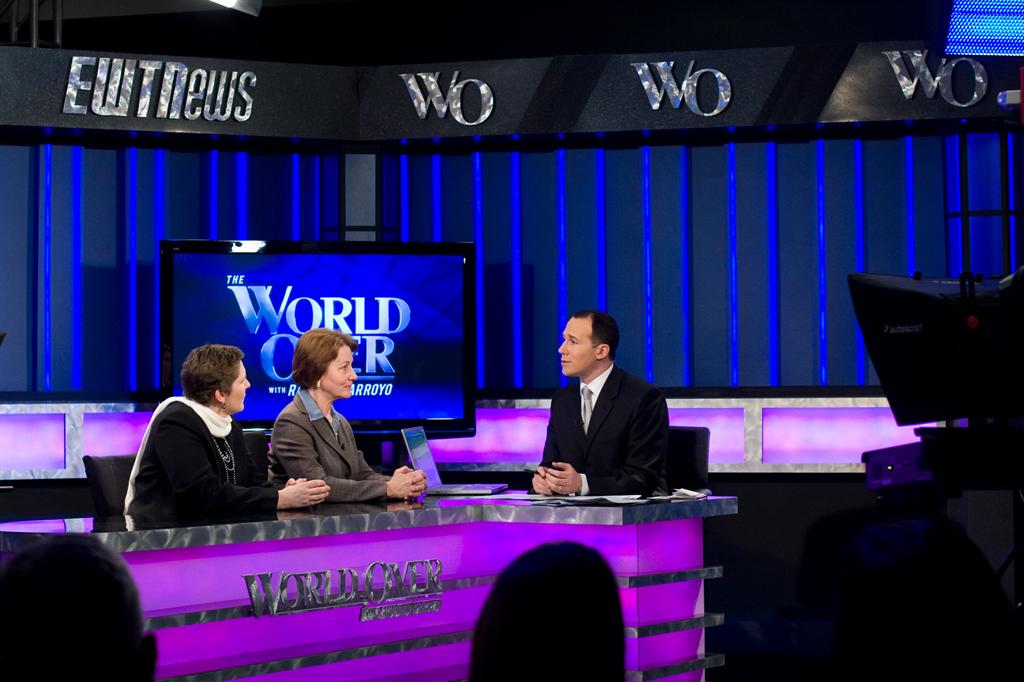Catholic TV Broadcaster Masters Format and Frame Conversion Challenges

EWTN’s 24/7 TV programming is a mix of religious service, news and inspirational programming produced in its own Irondale studios and sourced from around the world.
IRONDALE, AL.—With nine distinct television 24/7 channels originating from its Irondale, Ala. production center, Catholic faith broadcaster Eternal World Television Network understandably describes itself as the “world’s largest religious media outlet.” All of EWTN’s nine individual channels are produced in NTSC SD for distribution throughout the United States via cable/satellite TV. They are supplemented by two HD channels that simulcast the main English and Spanish feeds respectively. EWTN also distributes its channels globally by satellite. They are available in over 225 million households in more than 140 countries and territories.
In addition, EWTN hosts all of its nine services online at www.ewtn.com, with programming being offered via live streaming and on demand. Add 200 AM/FM EWTN radio affiliates through the United States, and ETWN’s self-description rings true. But because much of its content comes from Rome and other sites in Europe, format conversion is a constant challenge for EWTN. “We have to go from PAL to NTSC and back again on a constant basis,” said David Brantley, EWTN’s senior director of engineering. “We also have to up- and down-convert between 480i and 1080i, and deal with frame conversions from 50 to 60 fps, again on a constant basis.”
CONVERSION CONUNDRUM
EWTN’s 24/7 TV programming is a mix of religious service, news and inspirational programming produced in its own Irondale studios and sourced from around the world. This is a place where content is constantly being downlinked and uplinked, with producers having to cope with PAL-NTSC and NTSC-PAL conversions.
The challenge can be particularly daunting for EWTN staff when editing video on their Avid Media Composer systems: Historically, time was lost waiting for PAL-originated content to be converted into NTSC, so that the editors could work with it.
“It required a lot of separate pieces of equipment and people to do the conversion process,” Brantley said. “We’d have to downlink the European PAL feed, route it to a standards converter to change it into NTSC and then put the signal through a frame sync. Then, because we work in 16:9 SD in our studio, we’d have to use an aspect ratio adjuster to bring any 4:3 pictures to 16:9, and then upconvert the whole thing to 1080i for HD broadcast. It was not a simple process.”

The 1ru Teranex 2D Processor can handle format, frame and up/downconversions in a single packageENTER TERANEX
The solution to EWTN’s conversion conundrum occurred when the network decided to launch its Spanish HD service. As part of the new channel’s buildout, EWTN acquired two Teranex 2D processors from Blackmagic Design. One unit serves as the Spanish HD’s service’s primary converter and the other is a redundant backup.
The Teranex 2D Processor is a 1RU device that can handle format, frame and up/downconversions in a single package. All of the various I/Os can be set using the Teranex 2D’s front-mounted push buttons, while the conversion process can be monitored on a small display built into the unit. With this one device, EWTN can upconvert its NTSC SD 480 Spanish feed to HD 1080, and then to MPEG4 for satellite distribution. “It is all so incredibly easy,” said David Brantley. “You just push the buttons—you don’t have to go through any onscreen menus—and the Teranex 2D is ready to go.”
EWTN has found the Teranex 2D so useful that it has installed seven more of these units in its plant. “The fact that this unit is only 1RU in size helps,” Brantley said. “It’s not a big hassle to add it to a signal chain. The $1,995 pricetag also makes the Teranex very affordable.”
According to Bob Caniglia, Blackmagic Design’s senior regional manager for Eastern North America the original Teranex unit—made before Teranex Systems was acquired by Blackmagic Design in 2011—“cost $40,000 for the same functionality, and required a much larger rack unit.”
So why the 20-fold price drop? Caniglia attributes it to classic “economies of scale.” Being a much larger company, “Blackmagic Design had the resources to redesign the Teranex 2D to be smaller and much less expensive to make, without sacrificing its core capabilities,” said Caniglia. The result is a technologically equivalent converter that costs much less to make, and to retail.
EWTN’s David Brantley doesn’t care why the Teranex 2D only costs what it does, he’s just happy that it does. “This unit has worked so well for us, that we intend to roll it out to all of our satellite downlinks,” Brantley said. “It has substantially reduced our equipment, staffing, and workload, while ensuring that EWTN gets our programming out to the world.” In this case, EWTN is truly able to do the same job using less technology, and enjoying much less expense.
The professional video industry's #1 source for news, trends and product and tech information. Sign up below.
